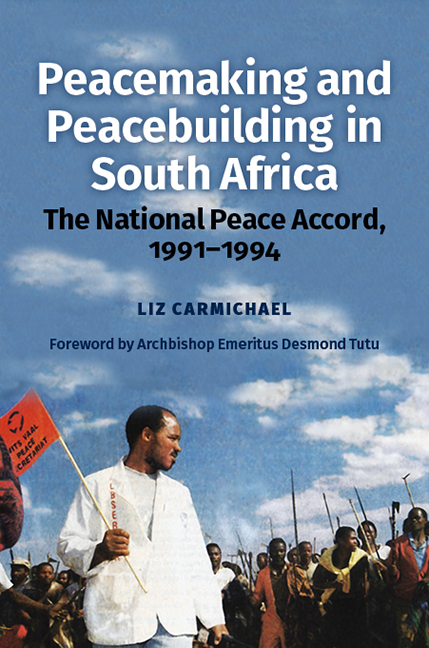Book contents
- Frontmatter
- Dedication
- Contents
- List of Illustrations
- List of Abbreviations
- Glossary
- Acknowledgements
- Note on Nomenclature
- Transition Timeline
- Foreword
- Introduction
- Part One Peacemaking, Peacebuilding, and the South African Conflict
- Part Two Peacemaking
- Part Three Peacebuilding
- Conclusion: Impact and Unfinished Business
- Bibliography
- Index
5 - De Klerk Becomes President, Mandela Walks Free
Published online by Cambridge University Press: 08 October 2022
- Frontmatter
- Dedication
- Contents
- List of Illustrations
- List of Abbreviations
- Glossary
- Acknowledgements
- Note on Nomenclature
- Transition Timeline
- Foreword
- Introduction
- Part One Peacemaking, Peacebuilding, and the South African Conflict
- Part Two Peacemaking
- Part Three Peacebuilding
- Conclusion: Impact and Unfinished Business
- Bibliography
- Index
Summary
Introduction
P. W. Botha suffered a stroke on 18 January 1989. He resigned the party leadership on 2 February and F. W. de Klerk became leader. De Klerk became Acting State President on 15 August, was formally elected on 14 September, and inaugurated on 20 September. Meanwhile National Intelligence operatives arranged to meet the ANC in exile. The Cold War, which had provided geopolitical cover for the apartheid government, symbolically ended on 9 November with the fall of the Berlin Wall. In February 1990 de Klerk released Mandela.
The expectation was that violence would abate and multiparty constitutional talks begin. Instead, bilateral ANC–government talks proceeded slowly, then stalled, while the ANC–Inkatha conflict spread and a long-delayed peace agreement between Mandela and Buthelezi, signed in January 1991, had no effect on the violence.
De Klerk, the NIS, and meeting the enemy
Frederik Willem de Klerk was born in 1936 into a political family. He was a student leader at Potchefstroom, became an attorney, entered Parliament in 1972 and Cabinet in 1978, and held posts in telecommunications, energy, and education. He was considered a moderately conservative centrist. By 1989, while never a ‘hawk’ but not fully ‘verligte’, he had no doubt that radical change must come – a ‘quantum leap’ as he called it on accepting the party leadership. As leader he was briefed by Kobie Coetsee on the secret talks with Mandela, of which he previously knew nothing. Privy to the Consgold talks since August 1988 through his brother Willem, he ‘took note’ of the impressions of the ANC given in those discussions but remained wary of ‘well-intentioned efforts by businessmen and academics’ and of falling prey to the wily SACP. Like Barnard he was determined that ‘when the time came, the government and no one else from our side should determine the timing and direction of the process’ (De Klerk, 1999 p.173).
While de Klerk was advancing to power the NIS decided to pre-empt further delay by establishing face-to-face contact with the ANC. In May, knowing Botha would shortly meet Mandela and that his reign was ending, the NIS instructed Hanna Langenhoven, its current contact with Willie Esterhuyse, to enlist his help to arrange a secret meeting between NIS operatives and Thabo Mbeki.
- Type
- Chapter
- Information
- Peacemaking and Peacebuilding in South AfricaThe National Peace Accord, 1991-1994, pp. 77 - 93Publisher: Boydell & BrewerPrint publication year: 2022



